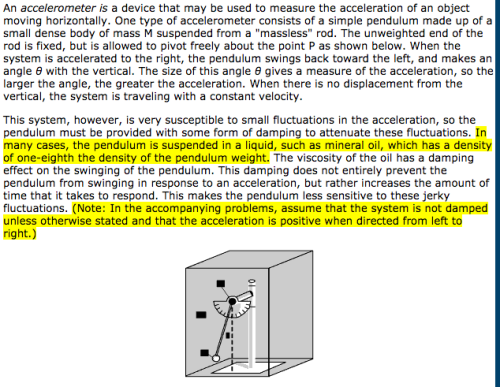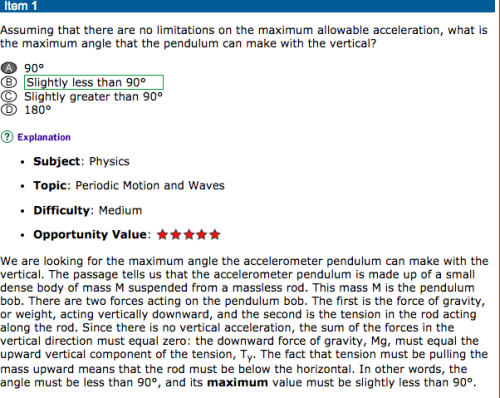D
deleted388502


I'm wondering if someone could explain this question to me. I'm confused as to why there must always be a component force in the y direction, it's not making intuitive sense to me. Thanks!


According to the answer explanation, "since there is no vertical acceleration, the sum of the forces [on the pendulum bob] in the vertical direction must equal zero." This isn't even true. The accelerometer as a whole experiences no vertical acceleration, but the mass at the end of the pendulum does: it is initially at rest relative to the pivot point, and then during acceleration its vertical position changes and approaches that of the pivot. By definition, it is undergoing some acceleration in the vertical direction, and thus experiences net vertical force at some point (that point being the beginning of the acceleration of the accelerometer).
The thing about this problem is they don't really prove that the answer is correct, though I buy that it is. Without any sort of vertical acceleration imposed on the accelerometer, it should be apparent that the pendulum mass can't get above 90º relative to the vertical axis, so the limit is clearly 90º. The answer key is asserting that the pendulum mass approaches this angle asymptotically, implying that the constant force of gravity on the mass reduces the mass's momentum as it moves upward (and as the upward component of the pendulum tension decreases) sufficiently to result in this behavior. That's seems reasonable, but they don't provide a mathematical proof, and I don't believe I can derive one off the top of my head.
Lame.
